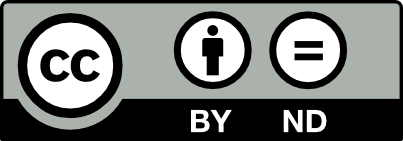L’analyse des problèmes de branchement des restrictions des représentations fait émerger le concept de transformation de brisure de symétrie et celui de transformation holographique. Les opérateurs de brisure de symétrie diminuent le nombre de variables dans les modèles géométriques tandis que les opérateurs holographiques l’augmentent. Plusieurs développements en série ou intégrale de l’analyse classique sont des cas particuliers de telles transformations.
Dans cette perspective, nous étudions deux familles remarquables d’opérateurs différentiels : les opérateurs de Rankin–Cohen et les opérateurs conformément covariants de Juhl. Nous établissons alors des théorèmes de type Parseval–Plancherel pour les transformations de brisure de symétrie associées et trouvons des formules intégrales explicites pour les opérateurs holographiques correspondants.
The analysis of branching problems for restriction of representations brings the concept of symmetry breaking transform and holographic transform. Symmetry breaking operators decrease the number of variables in geometric models, whereas holographic operators increase it. Various expansions in classical analysis can be interpreted as particular occurrences of these transforms. From this perspective we investigate two remarkable families of differential operators: the Rankin–Cohen operators and the holomorphic Juhl conformally covariant operators. Then we establish for the corresponding symmetry breaking transforms the Parseval–Plancherel type theorems and find explicit inversion formulæ with integral expression of holographic operators.
The proof uses the F-method which provides a duality between symmetry breaking operators in the holomorphic model and holographic operators in the -model, leading us to deep links between special orthogonal polynomials and branching laws for infinite-dimensional representations of real reductive Lie groups.
Révisé le :
Accepté le :
Publié le :
Keywords: Symmetry breaking, holographic transform, Rankin–Cohen operators, Juhl operators, orthogonal polynomials, branching rules, F-method
Mot clés : brisure de symétrie, transformation holographique, opérateurs de Rankin–Cohen, opérateurs de Juhl, polynômes orthogonaux, règles de branchement, méthode F
Kobayashi, Toshiyuki 1 ; Pevzner, Michael 2
 CC-BY-ND 4.0
CC-BY-ND 4.0
@article{AIF_2020__70_5_2131_0,
author = {Kobayashi, Toshiyuki and Pevzner, Michael},
title = {Inversion of {Rankin{\textendash}Cohen} operators via {Holographic} {Transform}},
journal = {Annales de l'Institut Fourier},
pages = {2131--2190},
publisher = {Association des Annales de l{\textquoteright}institut Fourier},
volume = {70},
number = {5},
year = {2020},
doi = {10.5802/aif.3386},
language = {en},
url = {https://aif.centre-mersenne.org/articles/10.5802/aif.3386/}
}
TY - JOUR AU - Kobayashi, Toshiyuki AU - Pevzner, Michael TI - Inversion of Rankin–Cohen operators via Holographic Transform JO - Annales de l'Institut Fourier PY - 2020 SP - 2131 EP - 2190 VL - 70 IS - 5 PB - Association des Annales de l’institut Fourier UR - https://aif.centre-mersenne.org/articles/10.5802/aif.3386/ DO - 10.5802/aif.3386 LA - en ID - AIF_2020__70_5_2131_0 ER -
%0 Journal Article %A Kobayashi, Toshiyuki %A Pevzner, Michael %T Inversion of Rankin–Cohen operators via Holographic Transform %J Annales de l'Institut Fourier %D 2020 %P 2131-2190 %V 70 %N 5 %I Association des Annales de l’institut Fourier %U https://aif.centre-mersenne.org/articles/10.5802/aif.3386/ %R 10.5802/aif.3386 %G en %F AIF_2020__70_5_2131_0
Kobayashi, Toshiyuki; Pevzner, Michael. Inversion of Rankin–Cohen operators via Holographic Transform. Annales de l'Institut Fourier, Tome 70 (2020) no. 5, pp. 2131-2190. doi : 10.5802/aif.3386. https://aif.centre-mersenne.org/articles/10.5802/aif.3386/
[1] Special functions, Encyclopedia of Mathematics and Its Applications, 71, Cambridge University Press, 1999 | MR | Zbl
[2] Another approach to Juhl’s conformally covariant differential operators from to , SIGMA, Symmetry Integrability Geom. Methods Appl., Volume 13 (2017), 26 | MR | Zbl
[3] Sums involving the values at negative integers of -functions of quadratic characters, Math. Ann., Volume 217 (1975), pp. 271-285 | DOI | MR | Zbl
[4] Integral transforms and their applications, CRC Press, 2015 | Zbl
[5] Analysis on Symmetric Cones, Oxford Science Publications; Oxford Mathematical Monographs, Clarendon Press; Oxford University Press, 1994 | Zbl
[6] Juhl’s formulae for GJMS operators and Q-curvatures, J. Am. Math. Soc., Volume 26 (2013) no. 4, pp. 1191-1207 | DOI | MR | Zbl
[7] Table of integrals, series, and products, Elsevier/Academic Press, 2015 (Translated from the Russian. With a preface by Daniel Zwillinger and Victor Moll, Eighth edition. Revised from the seventh edition) | Zbl
[8] Representations of semisimple Lie groups on a Banach space, Proc. Natl. Acad. Sci. USA, Volume 37 (1951), pp. 170-173 | DOI | Zbl
[9] Families of conformally covariant differential operators, -curvature and holography, Progress in Mathematics, 275, Springer, 2009 | DOI | MR | Zbl
[10] Eigenfunctions of invariant differential operators on a symmetric space, Ann. Math., Volume 107 (1978), pp. 1-39 | DOI | MR | Zbl
[11] Discrete decomposability of the restriction of with respect to reductive subgroups II: Micro-local analysis and asymptotic -support, Ann. Math., Volume 147 (1998) no. 3, pp. 709-729 | MR | Zbl
[12] Discrete decomposability of the restriction of with respect to reductive subgroups III: Restriction of Harish-Chandra modules and associated varieties, Invent. Math., Volume 131 (1998) no. 2, pp. 229-256 | DOI | MR | Zbl
[13] Multiplicity-free theorems of the restrictions of unitary highest weight modules with respect to reductive symmetric pairs. Representation theory and automorphic forms, Representation Theory and Automorphic Forms (Progress in Mathematics), Volume 255, Springer, 2008, pp. 45-109 | DOI | MR | Zbl
[14] Restrictions of generalized Verma modules to symmetric pairs, Transform. Groups, Volume 17 (2012) no. 2, pp. 523-546 | DOI | MR | Zbl
[15] F-method for symmetry breaking operators, Differ. Geom. Appl., Volume 33 (2014), pp. 272-289 | DOI | MR | Zbl
[16] Conformal symmetry breaking operators for anti-de Sitter spaces, Geometric methods in physics XXXV (Trends in Mathematics), Birkhäuser/Springer, 2018, pp. 69-85 | Zbl
[17] Finite multiplicity theorems for induction and restriction, Adv. Math., Volume 248 (2013), pp. 921-944 | DOI | MR | Zbl
[18] Differential symmetry breaking operators. I. General theory and F-method., Sel. Math., New Ser., Volume 22 (2016) no. 2, pp. 801-845 | DOI | MR | Zbl
[19] Differential symmetry breaking operators. II. Rankin–Cohen operators for symmetric pairs., Sel. Math., New Ser., Volume 22 (2016) no. 2, pp. 847-911 | DOI | MR | Zbl
[20] Symmetry Breaking for Representations of Rank One Orthogonal Groups, Memoirs of the American Mathematical Society, 238, American Mathematical Society, 2015 | DOI | MR | Zbl
[21] The large limit of superconformal field theories and supergravity, Adv. Theor. Math. Phys., Volume 2 (1998) no. 2, pp. 231-252 | DOI | MR | Zbl
[22] Tensor products of unitary representations of the three-dimensional Lorentz group, Math. USSR, Izv., Volume 15 (1980), pp. 113-143 | DOI | Zbl
[23] Tensor products of holomorphic discrete series representations, Can. J. Math., Volume 31 (1979), pp. 836-844 | DOI | MR | Zbl
[24] Anti-de-Sitter space and holography, Adv. Theor. Math. Phys., Volume 2 (1998) no. 2, pp. 253-291 | DOI | MR | Zbl
[25] Modular forms and differential operators, Proc. Indian Acad. Sci., Math. Sci., Volume 104 (1994) no. 1, pp. 57-75 | DOI | MR | Zbl
Cité par Sources :




